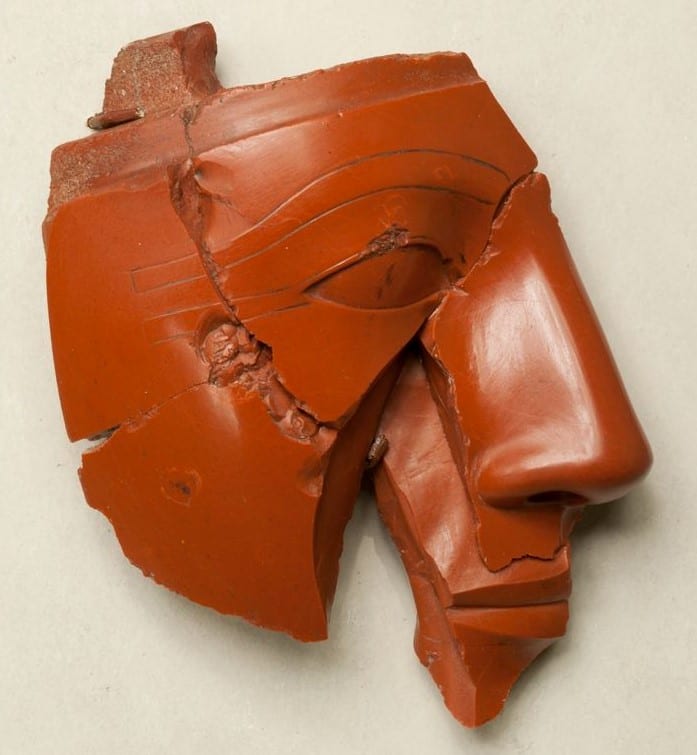Colours of Ancient Egypt – Red
By Anna Pokorska, on 4 December 2018
This is the third post in the Colours of Ancient Egypt series; here you can read the introduction, and here all about the colour blue.
Red was an easy colour to obtain in ancient Egypt as naturally red minerals, or clays, were abundant. In fact, they were already used as pigments for painting in pre-historic times. Of the earth pigments, as they are often called, ochre was used for red colouring. Like others, it is an iron oxide but gets its red shade from a mineral hematite, which can be naturally present in varying quantities. Another way of obtaining the pigment is by heating the more common yellow clay to produce what is called ‘burnt ochre’.
In ancient Egyptian painting we find the red colour often used to distinguish gender, as men’s skin was often painted red[1]. We can see an example of that in this painted wooden stela from the Petrie Museum.
Less obviously, red ochre was also popular in cosmetics such as rouge and lip colour. In fact, those pigments are still found in beauty products today due to their ready availability, stability and non-toxicity. However, perhaps the most surprising application of these materials is actually medicinal. The Ebers Papyrus, one of the oldest and most important medical texts from ancient Egypt (dated 1550 BC), prescribes ochre clays as a cure for any intestinal or eye problems.
However, minerals were not the only source of red colourants. Ancient Egyptians were also able to tint their textiles using madder or kermes carmine dyes. The former was derived from the root of a madder plant, rubia tinctorum (see below).
It was one of the most widely used natural red dyes until the development of synthetic equivalents in the 19th and 20th century. In fact, some madder-dyed cloth was even found in Tutankhamun’s tomb. On the other hand, kermes carmine was made from wingless insects found on certain species of European oak trees. Like madder it was used both as a textile dye and a lake, which is a pale pigment obtained by precipitating a dye onto an inert colourless substrate such as chalk. Kermes’ deep crimson shade made it a very popular colourant for centuries.
So far, I’ve mainly talked about pigments and dyes used for decoration, but I would be remiss if I didn’t mention at this point one of my favourite objects in the Petrie collection:

Fragment of a composite statue from Amarna: right ankle and heel, in red jasper (Petrie Museum, UC150; Photo: Anna Pokorska).
This is a right ankle and heel in red jasper, part of a full-size composite statue from Amarna, dated to the 18th Dynasty. I’ve often stopped in front of it imagining what the statue would have looked like whole. I have to admit that I previously assumed the sculpture to have been entirely made of red jasper, which, in my mind, looked incredible. However, that was not the case; only the exposed flesh would have been carved from red jasper (thus depicting a male figure), while the rest of the statue was likely made from Egyptian alabaster, limestone or wood. The Metropolitan Museum of Art in New York has fragments of a king’s head made of the same material and dated to the same period. In fact, some of the fragments come from the Petrie collection which makes me wonder if they were perhaps part of the same statue.
We may never know. But one thing is certain: even though we’ve since been able to create many synthetic red colourants of various shades, natural red pigments used by the ancients remain as popular as ever.
[1] Lorelei Corcoran, Color Symbolism, in ‘The Encyclopedia of Ancient History’, Edited by Roger S. Bagnall, Kai Brodersen, Craige B. Champion, Andrew Erskine, and Sabine R. Huebner, Blackwell Publishing Ltd. (2013), pp. 1673–1674
 Close
Close




